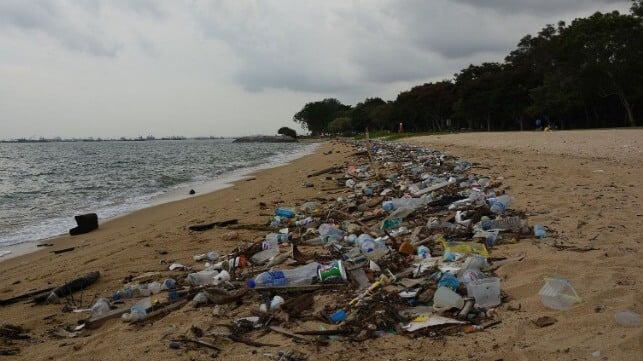Report: Recycling is Doing Little to Stop Ocean Plastic Pollution

America's recycling efforts are doing little to stem the generation of millions of tonnes of plastic waste, some of which ends up in the ocean, a new report by two environmental groups shows.
Contrary to data by the U.S. Environmental Protection Agency (EPA) that estimates plastic recycling in the country stands at about nine percent, the report contends that only five to six percent of the 42 million tonnes of plastic waste generated annually is recycled, a reality that has seen the U.S. become one of the major polluters of oceans.
The environmental groups used data from the National Academies of Science, Engineering, and Medicine, latest U.S. exports and the waste industry to come up with the conclusion of the low recycling rates.
With less than six percent of plastic waste recycled, 94 percent of plastic waste is disposed of in landfills, burned in incinerators, or ends up polluting oceans, waterways and landscapes, according to the report. The plastic recycling process itself is wasteful: about 30 percent of collected polyethylene terephthalate (PET) bottle plastic material is disposed of in the recycling process.
The report also shows that while plastics recycling is on the decline, the per capita generation of plastic waste has increased by 263 percent since 1980. Plastic waste generation has increased from 60 pounds per person per year in 1980 to 218 pounds per person in 2018.
“The paltry 5-6 percent U.S. plastic recycling rate in 2021 should be a wake-up call to the false promise that plastic recycling is a credible solution to plastic waste and pollution,” noted the report by environmental groups The Last Beach Cleanup and Beyond Plastics.
The authors recommended that the U.S. should reduce single-use plastic food service items, which have the highest likelihood of polluting the environment.
The release of the report comes just days after California Attorney General Rob Bonta announced a major investigation of the recycling claims made by the petrochemical and fossil fuel industries.
“The plastics industry must stop lying to the public about plastics recycling. Instead, we need consumer brand companies and governments to adopt policies that reduce the production, usage, and disposal of plastics,” said Judith Enck, President of Beyond Plastics.
EPA, which historically releases yearly data on recycling rates on November 15th, the National Recycling Day, has not released updated rates since November 2020 when it published the rates for 2018. In its last update, the agency estimated that plastic recycling rate stood at 8.7 percent in 2018. The peak recycling rate reported by EPA was 9.5 percent in 2014.
Since 2018, the U.S. plastic recycling rate has declined along with declining exports of waste, as China and other countries have closed their ports to foreign plastic waste. Total U.S. plastic waste exports decreased from 1.8 million tons in 2017 to 0.6 million tons in 2021.
“There is no circular economy of plastics. Plastics and products companies co-opted the success of other material recycling and America’s desire to recycle to create the myth that plastic is recyclable,” said Jan Dell, The Last Beach Cleanup Founder.
Globally, more than 300 million tons of plastic waste is generated annually, with the number rising fast. With the increase, oceans have become a huge sink for global plastic pollution, leading to negative impacts on marine life. Research shows that more than 800 coastal and marine species are directly affected by plastic waste, with over five trillion individual pieces of plastic floating in oceans.
Top image: Vaidehi Shah / CC BY SA 2.0
